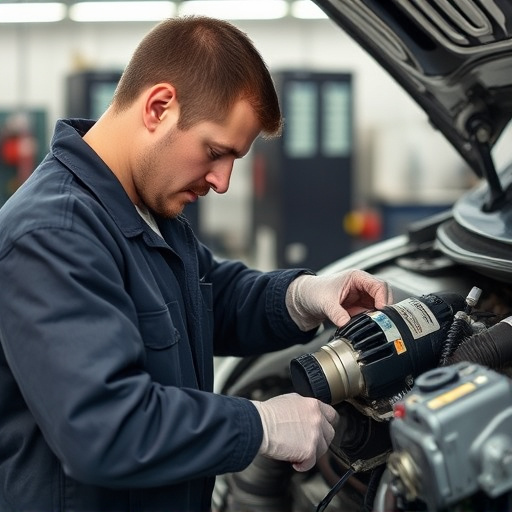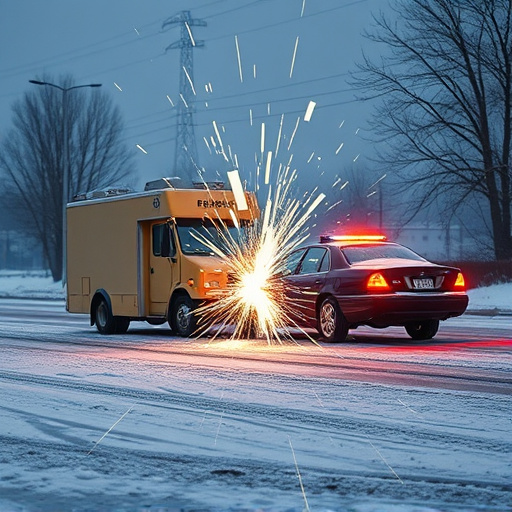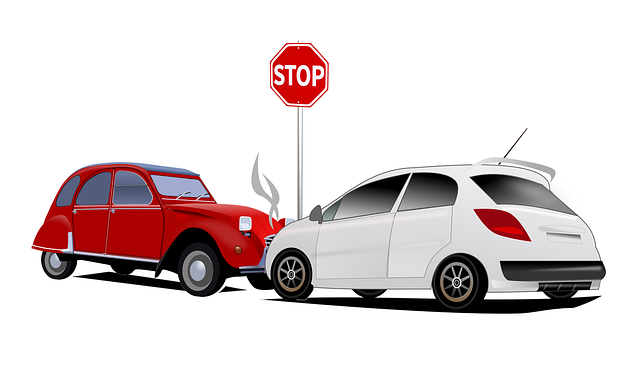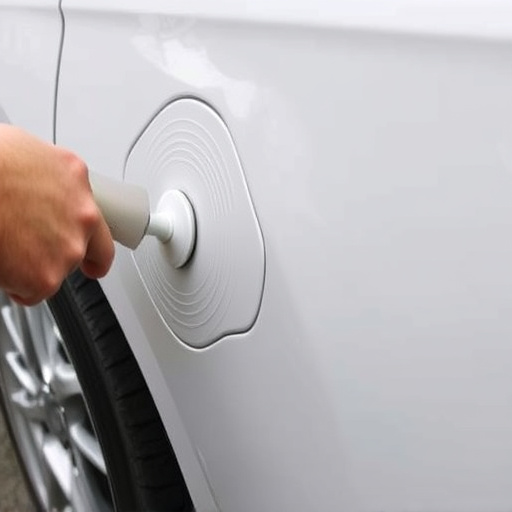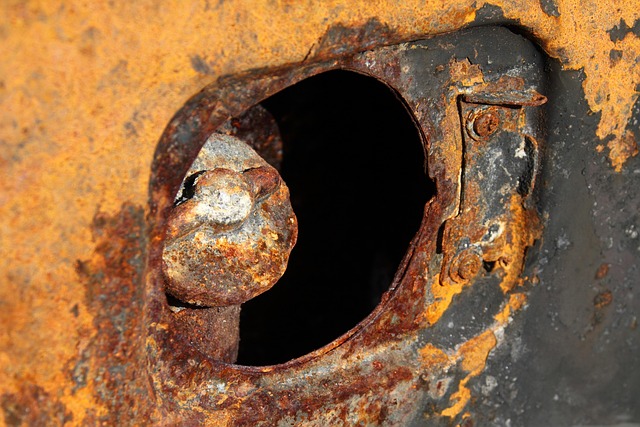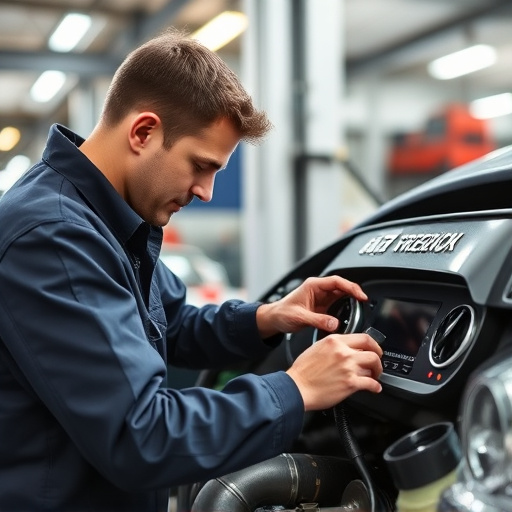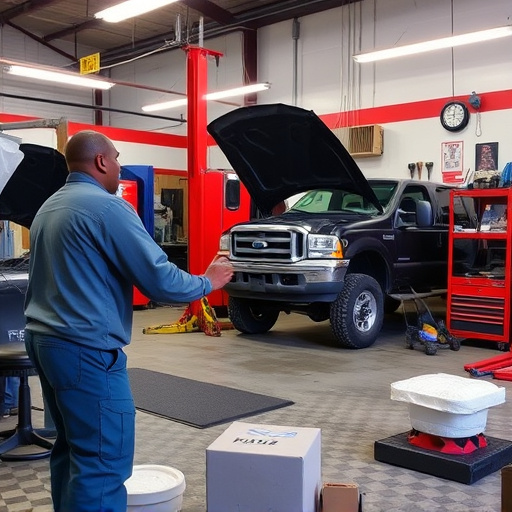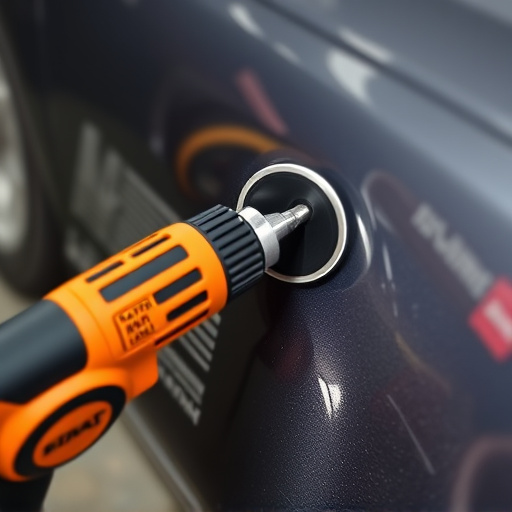After a collision, thoroughly evaluate your vehicle's battery to prevent hidden issues like corroded terminals and damaged wiring. Regular post-crash battery testing is crucial for safety, reliability, and minimizing risks of electrical failures. Battery replacement ensures optimal performance of critical systems in modern vehicles, with qualified services offering assessment, corrosion inspection, terminal cleaning, and voltage monitoring.
After a collision, proper vehicle maintenance is paramount. One often overlooked component crucial for safety and performance is the car battery. Understanding potential damage and its risks is essential. Ignoring post-crash battery testing can lead to unexpected failures, compromising your safety and vehicle’s reliability. This article explores why thorough battery assessment is vital, delving into common types of damage, the dangers of neglect, and strategic replacement approaches for optimal peace of mind on the road.
- Understanding Battery Damage After Collisions
- The Risks of Ignoring Post-Crash Battery Testing
- Effective Strategies for Battery Replacement Post-Crash
Understanding Battery Damage After Collisions
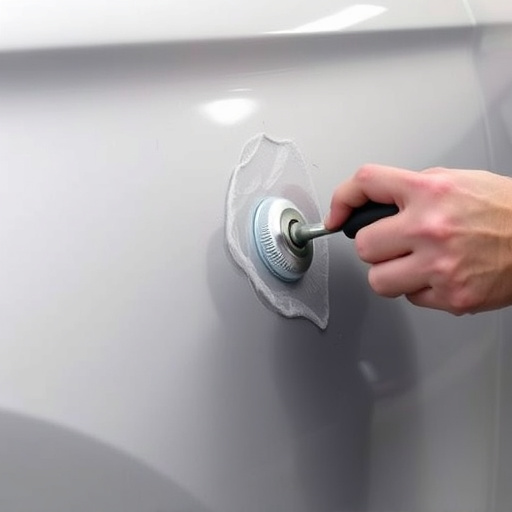
After a collision, it’s not just the visible damage that needs attention; your vehicle’s battery also requires thorough evaluation. Batteries are intricate components that can sustain various types of harm during a crash. Even minor fender benders can cause internal damage, leading to short circuits or reduced capacity. The impact might result in external signs like fluid leaks or visible cracks on the battery casing. However, hidden issues such as corroded terminals or damaged wiring may go unnoticed yet significantly affect performance.
Given the critical role batteries play in starting your vehicle and powering essential systems, promptly assessing their condition is crucial. Many collision repair services offer comprehensive battery replacement after crash services to ensure drivers’ safety and peace of mind. For instance, a Mercedes Benz repair shop would employ specialized tools to diagnose and replace faulty batteries, restoring your car’s reliability on the road. Regular check-ups post-collision can prevent future breakdowns, making it an essential step in any car repair shop’s process.
The Risks of Ignoring Post-Crash Battery Testing

Ignoring post-crash battery testing can pose significant risks to both safety and vehicle performance. After a collision, even if the external signs seem minimal, internal damage could have occurred that goes unnoticed by the naked eye. Battery cells are delicate components, and a crash can cause them to become misaligned, compressed, or otherwise damaged. These issues often manifest as reduced battery capacity, power output, or even complete failure, which can lead to unexpected vehicle shutdowns while driving.
Moreover, failing to test the battery after a collision may result in hazardous situations. A compromised battery could leave your vehicle stranded on the side of the road, increasing the risk of accidents involving other drivers. In extreme cases, electrical failures due to internal damage can spark fires or cause other critical systems to malfunction. Regular post-crash battery testing is an essential step in ensuring your safety and peace of mind, especially for vehicles subject to hail damage repair, scratch repairs, or fleet repair services.
Effective Strategies for Battery Replacement Post-Crash

After a collision, one often overlooked component that requires thorough inspection and potential replacement is the vehicle’s battery. Battery replacement after a crash is an essential step in ensuring your vehicle’s reliability and safety. Many modern vehicles rely heavily on electrical systems, making a fully functional battery crucial for the overall performance of various components, including the ignition system, lighting, and computer modules.
Effective strategies for battery replacement post-crash involve several steps. Firstly, always consult with qualified collision repair services or a reputable vehicle repair shop to assess the extent of damage. They can provide guidance on whether a simple clean and recharge is sufficient or if a complete battery replacement is necessary. Regularly checking your vehicle’s battery maintenance is key, especially after a collision. This involves inspecting for signs of corrosion, leaks, or physical damage and cleaning the battery terminals to ensure optimal conductivity. Additionally, keeping an eye on battery voltage levels can help predict potential failures, allowing for proactive battery replacement when needed.
In light of the above discussions, it’s clear that battery testing is an indispensable step after any collision. Understanding potential battery damage and its risks can save you from costly repairs or even dangerous situations. By employing effective strategies for battery replacement post-crash, you not only ensure your vehicle’s safety but also prevent potential environmental hazards associated with faulty batteries. Remember, a simple test could mean the difference between a smoothly running car and a costly repair or a hazardous situation on the road. Therefore, prioritize battery testing to stay safe and secure after any crash. Consider this a crucial step in your post-collision recovery process, focusing specifically on battery replacement when necessary.
